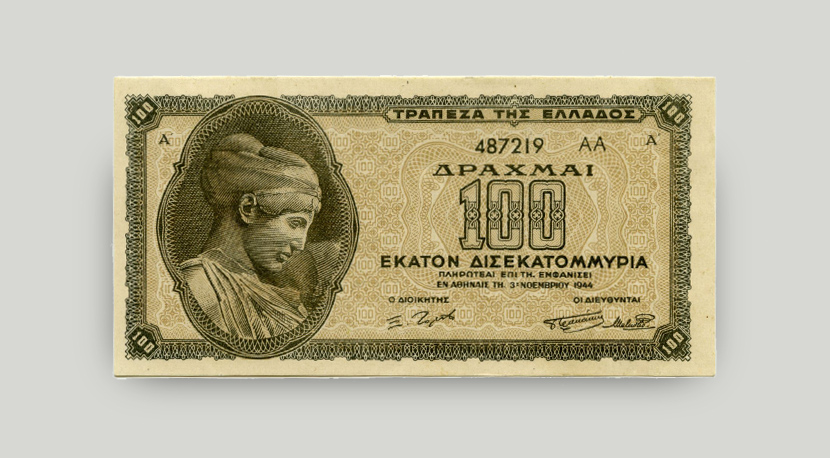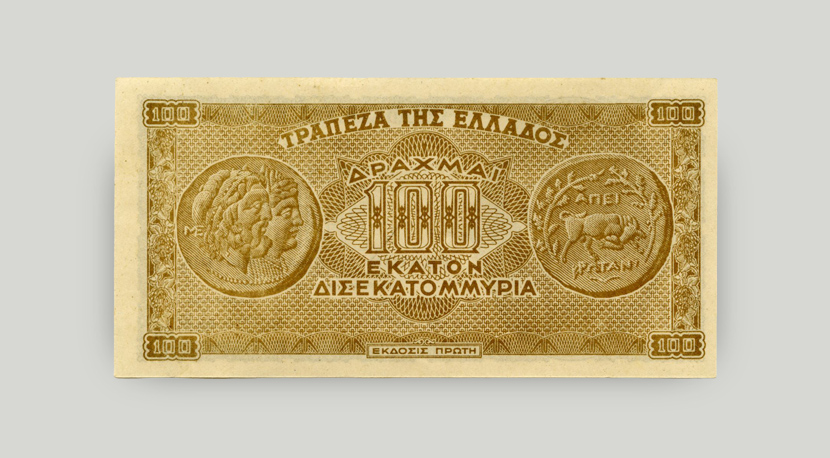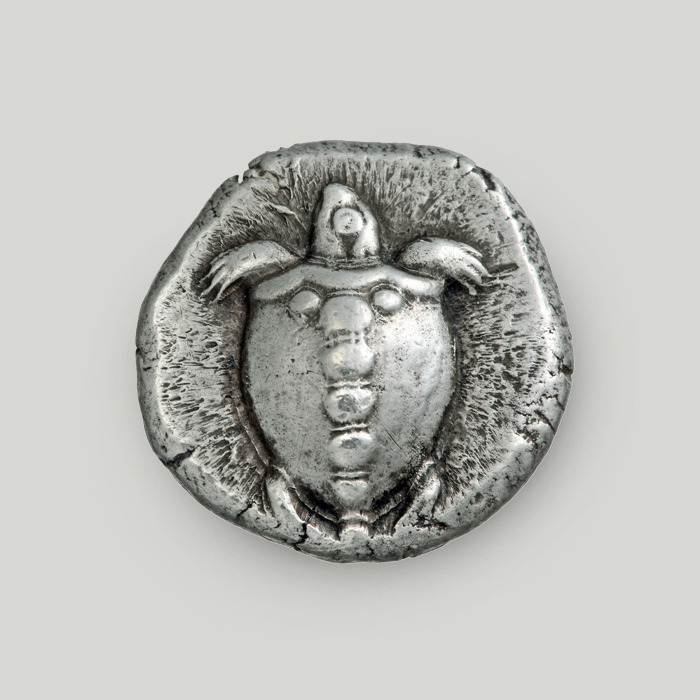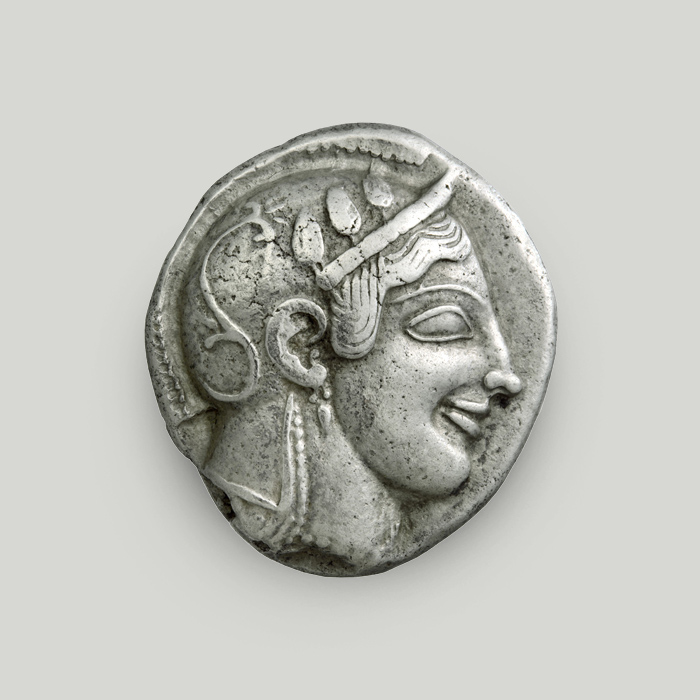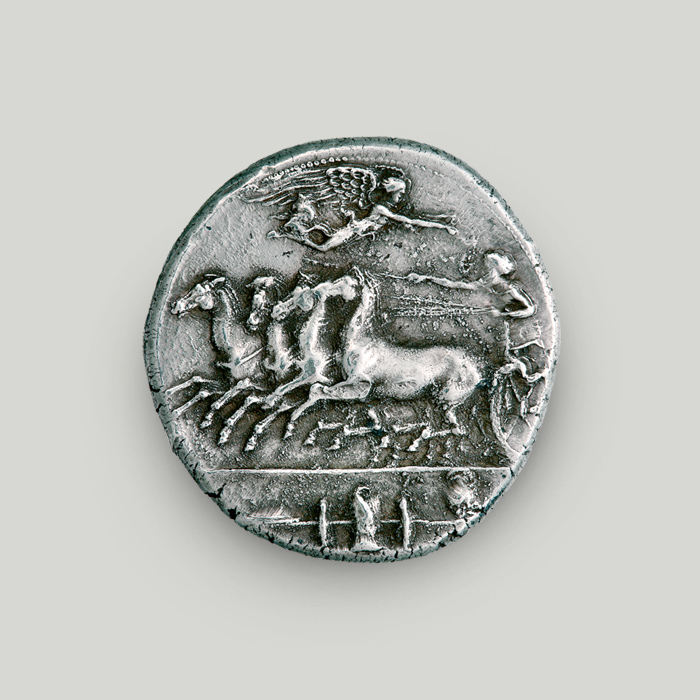100 billion drachma banknote, 1944
The 100-billion-drachma banknote was put in circulation on 3 November 1944. It is the largest denomination note ever to be issued in Greece. A galloping inflation resulted in the issue of many absurdly high denomination banknotes from 1941 to 1944. The banknote bears the signature of Xenophon Zolotas, Co-Governor of the Bank of Greece at the time.
Face
Left: bust of the nymph Deidameia. The nymph is depicted in profile looking to the right.
Back
Left and right: obverse and reverse of the ancient coin of the Epirote League.
Banknotes during the German Occupation
The years from 1941 to 1944 were dire due to the German Occupation of Greece during WWII. The banknotes put in circulation during that period are known in Greece and other countries as “occupation banknotes”.
After Athens was occupied, the German government appointed one Italian and one German commissioner to the Bank of Greece. These commissioners had absolute control over the country’s economic policy.
Their main focus was on ensuring all the material needs of their armies would be met. To this end, they mass issued banknotes.
Under the imminent threat of economic collapse and to address the burgeoning demand for banknotes, many Greek printers were recruited.
A valueless banknote
With inflation steadily increasing as early as 1942, new issues had to be put in circulation one after another.
This uncontrolled mass production of banknotes soon led to overinflation.
During the German occupation, 20 different types of banknotes were circulated. The galloping inflation resulted in denominations ranging from 10,000 to 100 billion drachmas.
The 100-billion-drachma banknote is the largest denomination banknote to ever be issued in Greece. Its actual value, however, was frustratingly close to zero.
Signed by Xenophon Zolotas
The 100-billion-drachma note was put in circulation on 3 November 1944.
It bears the signature of Xenophon Zolotas, first Co-Governor of the Bank of Greece after the German occupation. Zolotas went on to serve 2 more terms as Governor of the Bank of Greece; later, he became Prime Minister of Greece.
The nymph Deidameia
The bust of the nymph Deidameia depicted on the face originally belonged to a scene in the western frieze of the temple of Zeus at Olympia.
It is among the best samples of the severe style that is typical of early classical art. The frieze was created by an anonymous sculptor now conventionally called the “Olympia Master”.
The Epirote League
Ancient coins were a common theme in the banknotes of the newly-established Greek state.
The back of the 100-billion-drachma note depicts the obverse and reverse of the ancient coin of the Epirote League:
- On the left is the obverse of the coin depicting the heads of Zeus and Dione.
- On the right is the reverse depicting a bull and the local name ΑΠΕΙΡΩΤΑΝ (APIROTAN), which is Doric for “of the Epirotes”.
The Epirote League (Ancient Greek: Κοινὸν Ἀπειρωτᾶν) was a coalition formed between the city-states of Epirus during the Hellenistic period (231-168 BCE).
The 100-billion-drachma banknote of 1944 is on display at the Banknote Museum of the Ionian Bank in Corfu, managed by Alpha Bank.
The exhibit is open to the general public. View the Museum opening hours.
